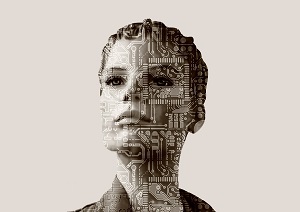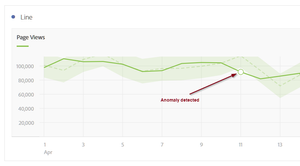
Introduction to Adobe Sensei
15 Apr 2018 » MSA
I am sure you have been hearing a lot about Adobe Sensei lately. This technology was announced in November 2016, but only in the last few months it has become more mainstream. In summary, Adobe Sensei is Adobe’s approach to artificial intelligence. In this post, I would like to provide a brief introduction to this new Adobe offering. I am not an expert in these technologies, but if you have heard of these technologies and are wondering about them, this post will shed some light.
Artificial intelligence
Let’s start with the basics. What is artificial intelligence? One explanation that I found particular interesting is (from the Wikipedia):
Any device that perceives its environment and takes actions that maximize its chance of successfully achieving its goals
 Believe it or not, artificial intelligence is not something new. It started as a discipline in the 1950’s. The computers back then could only support simple use cases, but researchers in some universities started to envision what this technology would look like in the future. I would venture to say that Steven Spielgberg’s film brought this technology from the research centres and R&D departments to the general public.
Believe it or not, artificial intelligence is not something new. It started as a discipline in the 1950’s. The computers back then could only support simple use cases, but researchers in some universities started to envision what this technology would look like in the future. I would venture to say that Steven Spielgberg’s film brought this technology from the research centres and R&D departments to the general public.
At the same time, with these capabilities becoming more widespread, some voices have started to warn about them. Elon Musk is probably the most well-known voice with this view. At the other end of the spectrum, Bill Gates thinks it will be good for humanity [links]. Personally, I would like Gates’ view to be right, but I share some of Musk’s concerns.
Adobe Sensei
This is Adobe’s approach to artificial intelligence and machine learning. The definition in the previous section is very broad and there are many approaches to artificial intelligence. As far as I know, Adobe has no interest in self-driving cars or military equipment. So, from all the paths that you can take with this technologies, Adobe has chosen to focus on what it does best: digital experiences.
It is also worth mentioning that this technology is for all Adobe clouds: Document Cloud, Creative Cloud and Experience Cloud. Obviously, I will only be focusing on the latter.
Applications in the Adobe Experience Cloud
Unlike other AI technologies, where the provider offers access to their proprietary technology and you have to decide how to use it, Adobe has taken a different approach. Chances are that you are already using it, without knowing it. In other words, Adobe has embedded Adobe Sensei in some Experience Cloud tools and you only use it through these tools. You do not need to be a developer to benefit from it.
Check the following places where Adobe Sensei is hidden:
- Automated Personalization. Adobe Target Premium feature that decides which is the best experience for a particular visitor. Instead of having to manually create segments and assign an experience for each segment, you just create all the experiences and Adobe Sensei will choose the best for you on an individual basis.
-
 Anomaly Detection. With so many variables in Adobe Analytics, it is impossible to track when one dimension or metric starts misbehaving, especially if the main KPIs do not show any unexpected behaviour. With anomaly detection, Adobe Sensei evaluates the values for you and highlights when something seems wrong. This is enabled by default in trended reports in Analysis Workspaces. For example, if you use a line graph, it will show the current value, the expected value and the range that the algorithm considers reasonable.
Anomaly Detection. With so many variables in Adobe Analytics, it is impossible to track when one dimension or metric starts misbehaving, especially if the main KPIs do not show any unexpected behaviour. With anomaly detection, Adobe Sensei evaluates the values for you and highlights when something seems wrong. This is enabled by default in trended reports in Analysis Workspaces. For example, if you use a line graph, it will show the current value, the expected value and the range that the algorithm considers reasonable. - Contribution Analysis. This is usually the next step after detecting an anomaly. As the help section states, it is a “process designed to uncover contributors to an observed anomaly”. Just by hovering over the spotted anomaly, an option to analyse it will show up. It will then look in all the variables of your implementation to see what has contributed to a particular value.
- Lookalike modelling. This is an audience manager feature that finds visitors who have very similar traits to a given audience. You will usually want to perform it with 3rd party data. A typical example is finding cookies, which look very similar to those that have done a purchase, but have not done this purchase. It does so by comparing trait qualifications of the baseline and looking for the same traits in the rest of the population.
The previous list is by no means an exhaustive list of features powered by Adobe Sensei in the Experience cloud. There are more than a dozen features powered by this technology. Expect more to come in the future. If you are a developer and would like to play with it more directly, stay tuned, as it should be available in the future via Adobe I/O.